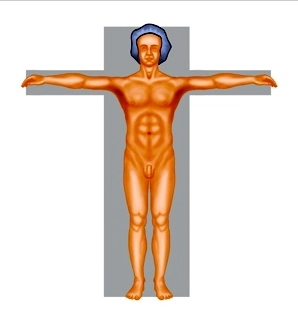- After gastrectomy Roux-en-Y esophagojejunostomy is a technically rather straightforward standard procedure with favorable long-term functional results. It requires sufficient length (50-60cm) of the interposed jejunal segment. Staplers are useful here because their insertion does not require any additional incisions in the bowel.
-
Indication
-
Contraindications
- The surgeon must have mastered the technique of hand sewn anastomoses before turning to staplers. Another prerequisite is precise handling of the staplers: Their technology must be practiced, and their dangers as well as sources of error must be known.
-
Preoperative diagnostic work-up
- Is included in the work-up of the underlying disease.
-
Special preparation
- If necessary, initiate nutritional support before surgery in patients with marked preoperative weight loss.
- Otherwise, no special regimen regarding laxative measures is needed.
- As routinely required by the anesthesiologists, the patient should have nothing by mouth before surgery (at least 2 - 6 hours).
-
Informed consent
- Failure of the esophagojejunostomy
- Failure of the jejunojejunostomy
- Changes in the postoperative diet requiring several (5 - 6) small meals during the day.
- Vitamin B12 substitution at least every 3 months
- Weight loss after gastrectomy, which probably will rise to about 10% of body weight.
General risks, e.g., postoperative bleeding, thrombosis, embolism, infectious complications such as wound/intraabdominal abscess.
-
Anesthesia
- This procedure requires general anesthesia.
- Due to the extent and duration of the procedure, postoperative analgesia by epidural catheter is advised.
- In addition, a central venous line should also routinely be placed, since initial postoperative nutrition requires administration via this catheter
-
Positioning
![Positioning]()
- The patient is positioned supine with both arms abducted.
- On the operating table the patient may be slightly hyperextended.
-
Operating room setup
![Operating room setup]()
- Usually the surgeon stands to the right of the patient, with the first and second assistants to the patient’s left.
- The second assistant stands to the right of the first assistant.
- The scrub nurse also stands to the left of the patient, and most often his/her instrument table will be above the patient’s legs. If needed, the second assistant may also stand to the left of the surgeon.
-
Special instruments and fixation systems
- Good exposure in the upper abdomen requires a retractor system. We have made good use of a Rochard abdominal retractor. Naturally, a Stuhler’s retractor or Ulrich cable winch retractor may also be used.
-
Postoperative management
Medical management
- Early postoperative extubation and adequate analgesia (epidural nerve block!) are of vital importance.
- Follow this link to PROSPECT (Procedures Specific Postoperative Pain Management).
- This link will take you to the International Guideline Library.
- The nasogastric tube placed in the upper GI tract may be left as a splint for 1 - 2 days, but there appears to be no difference if it is removed earlier.
- In many departments it is common to perform an upper GI series of the esophagojejunostomy with diatrizoic acid (Gastrografin®) on day 5 after surgery. However, trials have shown that this measure does not enhance early detection of possible anastomotic failure and that basically this study is not useful. Rather, whenever the patient develops complications (fever, elevated WBC, atypical abdominal symptoms) it makes more sense to rule out any anastomotic failure in a specific and timely manner by means of an upper GI series with Gastrografin®, CT scan or endoscopy. The timing should therefore depend more on the clinical symptoms and less on a fixed protocol.
Deep venous thrombosis prophylaxis
- With low-molecular-weight heparin.
- This link will take you to the International Guideline Library.
Ambulation
- On the evening of the operation, the patient is mobilized to the edge of the bed or into the armchair and speedily out of bed on postoperative day 2 or 3.
Physical therapy
- Physical therapist helps the patient in ambulation and supervises intensive breathing exercises.
Diet
- We prefer to let the patient drink 3 cups of tea on postoperative day 1 and have him/her drink freely by day 2. Traditionally, return to regular diet is carefully initiated with soup after 3-4 days.
Bowel movement
- Usually, there will be bowel movement after 3-4 days. This may be helped with a mild laxative.
Work disability
- Work disability usually lasts at least 4 weeks.


